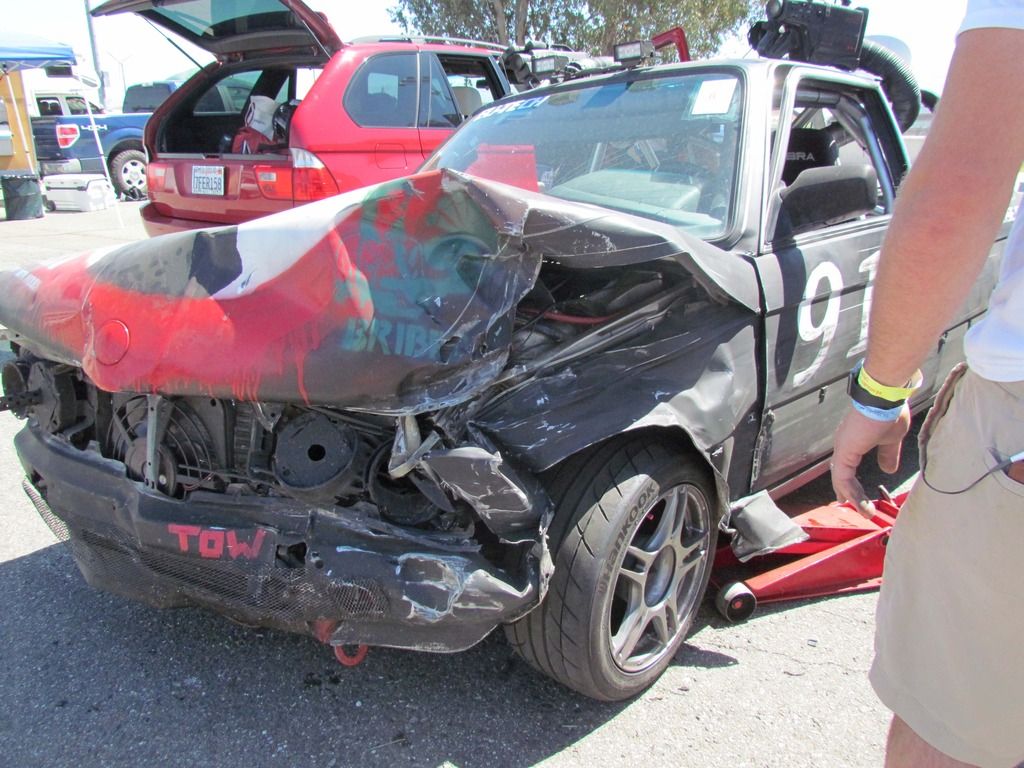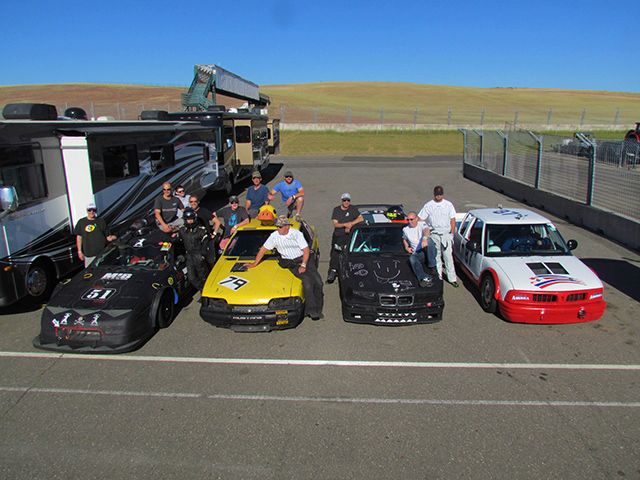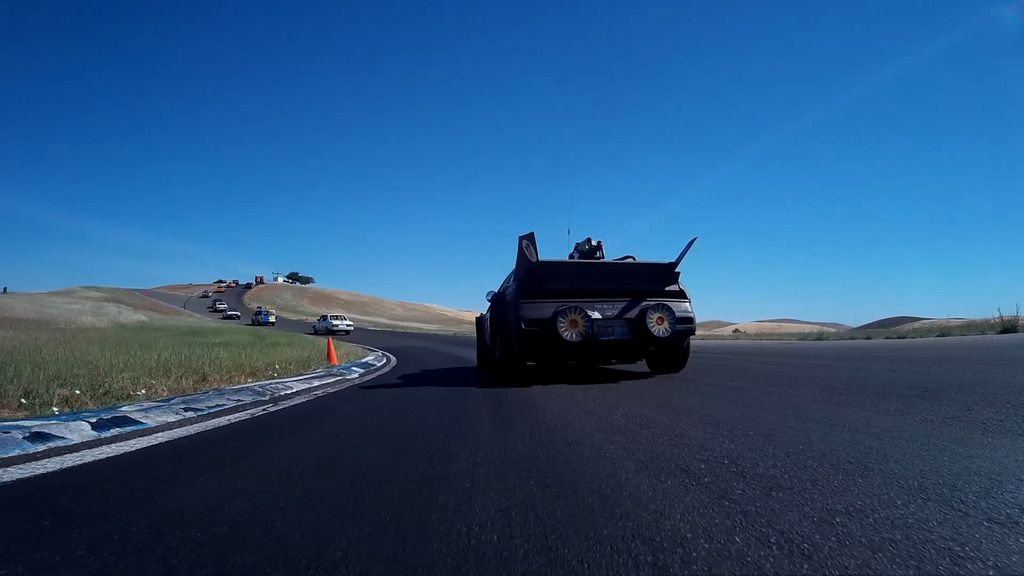Our weight goal for the new vehicle was 2250 pounds. And if we could get maybe 53% rear weight, so much the better. We didn't make our goals, but hey, it's important to have goals.
In the final configuration, the Fiero came in at 2587 pounds.
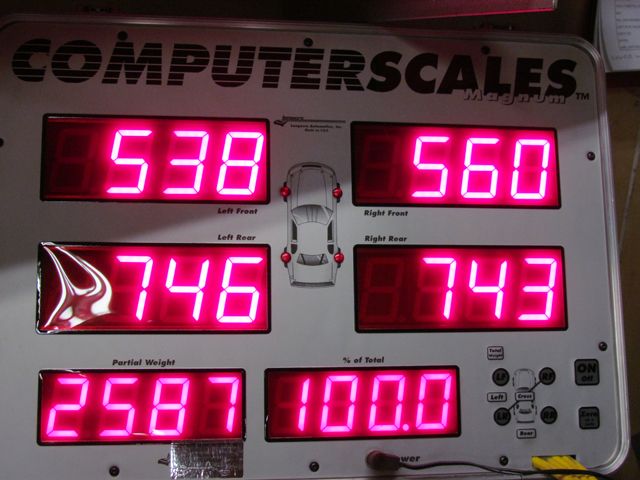
The S10 weighed in at 2590. So we missed that goal.
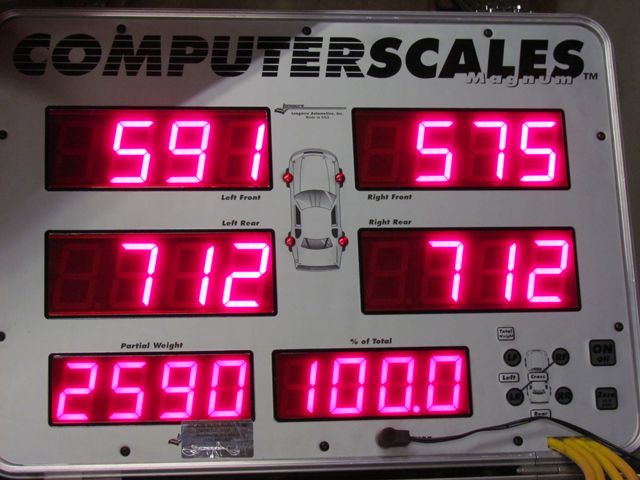
So the good news was that, though the truck is heavier, it also has more wind resistance. We really could have stood to lose a couple hundred pounds. The actual positive note was that the weight was distributed a bit better in the truck. The Fiero came in with 57.6% rear weight bias. The truck ended up with 55% rear weight bias. That doesn't sound like a lot, but we can each attest to the fact that it feels significantly better. With the changes to the Fiero's suspension front and back, we no longer had that "I'm treading on the edge of a cliff atop a pit of alligators" feeling. Unfortunately that muscle/sense memory from the earlier days stuck with us.
We are also able to run significantly wider tires front and back.
I think nobody who has read this thread would be surprised to hear that we were not running the stock S10 or Trakker suspension. We replaced the front Trakker struts with upper control arms. That meant we could take the time to locate the Fiero upper control arms in an advantageous position. Check out the next two photos and you can see that even with hard cornering, the outside front tire is exhibiting positive camber.
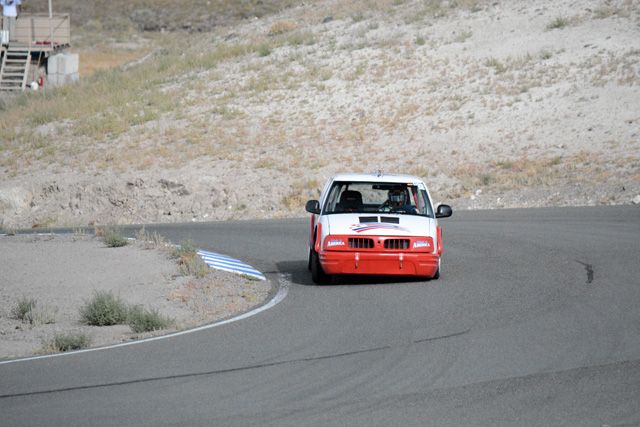

Even the rear on that second shot shows good camber.
Rich and Were talking this last Saturday, and we agree that we might want to go with a heavier sway bar. Not sure how to make that happen. We actually made our own front sway bar after failing to find anything at the wrecking yards that was suitable. We made hollow bar using 1 1/4" .090" wall tubing.
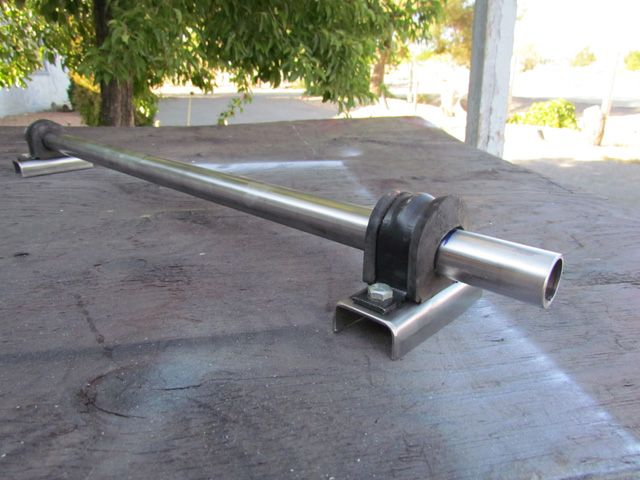
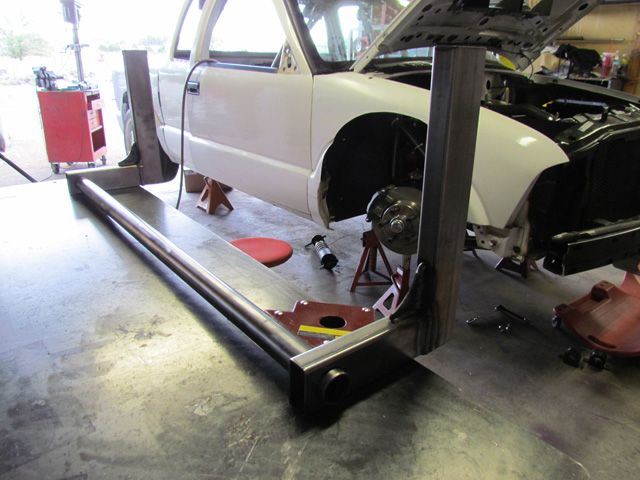
We might need to go with .120" tubing or a larger diameter. After the first weekend of racing, we see no obvious twisting or deformation. But we don't know how to calculate the spring rates.
As far as how it handles, we had Sam, the current Fiero owner, out on the track with the car. He said that the car was easy enough to drive that he could spend all day behind the wheel. And if we ever needed a fourth driver, he is our man. Sam actually has much more road race experience with his vintage racing and we appreciated his comments.
Competitive? Well ther were two main problems on our first outing. Well three if you count driver experience. First was a problem with the fuel pick up in our new fuel cell. The pick up is a hose and it appears to have a tendency to curl upward. We seemed to be limited to about 45 minutes and 5-6 gallons of fuel before the engine started sputtering. We thought it was a failing fuel pump or overheating of a fuel line. In either case we were concerned about fuel starvation causing the engine to lean out and burn down. Doug has fashioned a couple tubes to replace the pick up hose. This is much like several other manufacturers use on their cells. We should keep the actual input close to the bottom of the cell.
Our second problem was that we all agreed we were down on power. The diagnosis was simple, Ryan and GMTuners had modified the PCM or ECM or whatever the computer is called. He removed the auto tranny stuff, reset the rev limiter and pulled the anti-theft stuff. All good. But we failed to get a proper CASE learn process. We needed a sensor from an auto transmission to allow us to do something. Of course this was all done 20 minutes before leaving. We were assured that the engine would be okay without a CASE learn but......
In any case we were very happy with the car. Neither of the problems reflected upon the design or actual build of the car. Overall we done good. As far as being competitive, that remains to be seen. With more power I'm hoping to do well at our next race. That will be at The Ridge in Washington State this next July 11-12.

























